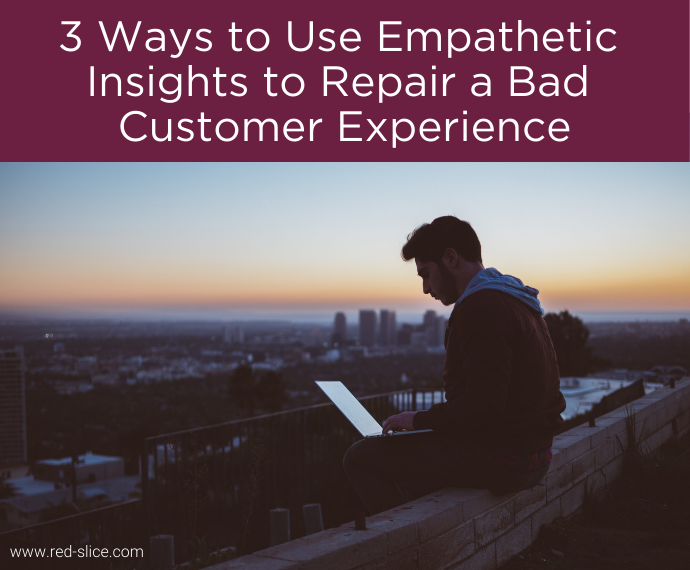
Have you ever gotten an email from customer service or an answer from a sales rep that left you feeling hopelessly misunderstood?
This seems to happen to me more as I get older, and while I completely admit that the common denominator is me, nine times out of ten, it is a result of a brand representative not truly listening to me or “getting” the real issue.
When an eCommerce site screwed up the card on an order I had sent a client, they simply threw a gift card at me, without truly understanding the impact to my business reputation. As a result, their attempt to make amends was seen as performative and like I was a nuisance.
But…when a cable company representative told me how she completely understood my surprise at an increase in my bill and admitted, “I would feel the exact same way if that had happened to me!” in an unscripted and authentic manner, that changed the tenor of our phone call to one of constructive problem solving.
A world of painful and unnecessarily contentious communication awaits you if you don’t intimately understand your customers. If you don’t appreciate what they are thinking and most importantly, feeling. If you can’t see miles down the road to anticipate what would most delight them or make their lives/work easier.
Without empathetic customer insights, you can never offer a standout experience that gets customers talking and keeps them for life. (Tweet This!)
Here are three customer communication pitfalls that can be avoided with more effective – and empathetic – customer insights:
- Make it right! When a customer has a bad experience, it’s not about blame in that moment. It’s about taking responsibility and working to solve the problem. If indeed your company’s products or services are responsible, you may not be able to undo the damage you caused by blowing their big client presentation, not delivering that dream outfit for their big date in time, or putting them on the wrong technology platform. But you can acknowledge the issues, sit side by side with them in empathy, and attempt to make it right, make amends, or improve for next time – whatever is most suitable.. The hard part: The action you take needs to be tailored to the situation they have faced. You can’t go back in time, but what can you provide for them going forward? Top tip: Free gift cards or future discounts can work sometimes, but not all the time!
- Don’t confuse responsibility with accountability and humanity: You may legally not want to “admit” anything was your fault- and perhaps it wasn’t. But you can take on accountability for them as your customers. As someone who’s success you care about. As a human being. You can say you’re sorry for them experiencing this, you can empathize with how much it sucks. You can problem solve together on a path forward. But the minute you find yourself wanting to utter, “You didn’t fill out______” as an excuse, check yourself because that is not what’s required at that pivotal moment. When you understand your customer’s world, you can better find connection with what they are feeling and take effective action.
- Address the emotion behind the scenes: It doesn’t matter if you sell clothing or consulting or software. Customers buy because of both logic and emotion. They want to belong, they want the choices they make to say something about them. Yes, even if the sale is B2B! So when communicating with customers, remember the emotions that may be guiding their decisions. This is why ideal client personas are so important. If you know your audience tends to be risk averse, you need to instill confidence, gain trust, and showcase how your offering helps them gradually make change. If you know your customers are edgy and love taking risks, talk to them about how they can transform their organization/life or which other disruptive leaders have blazed a trail with you and found success.
Know your customer. As a human with complex motivations and emotions. And serve them by speaking to their logic and emotions when things go wrong and you need to make them right. Empathy will truly make your business stand out from the crowd.
Tune in to The Empathy Edge podcast to learn from other great leaders and marketers on how empathy helps them create better customer experiences.




